Wildlife Reserves and National Parks in West Bengal: A Detailed Exploration
West Bengal, a state nestled in the eastern part of India, is renowned for its cultural heritage, bustling cities, and diverse natural landscapes. Among its many attractions, the state boasts a number of wildlife reserves and national parks that showcase the rich biodiversity and unique ecosystems of the region. 5 Reserves and National Parks in West Bengal From the iconic Sundarbans mangrove forests to the lofty peaks of the Eastern Himalayas, each reserve and park offers a distinct experience for nature enthusiasts and wildlife lovers alike. This comprehensive guide explores the reserves and parks of West Bengal, highlighting their conservation significance, unique flora and fauna, safari experiences, and the challenges they face.
5 Reserves and Natinal Parks in West Bengal
ALSO READ:https://ghumakkadboys.com/wildlife-and-safari-trip-in-gujrat/
1. Sundarbans National Park
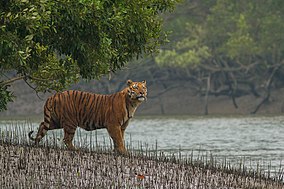
# 1of 5 reserve and national park in west bengal
Location: Located in the southern part of West Bengal, Sundarbans National Park is the largest mangrove forest in the world and a UNESCO World Heritage Site.
Flora: The Sundarbans are characterized by dense mangrove forests dominated by species like Sundari (Heritiera fomes), Goran (Ceriops decandra), and Gewa (Excoecaria agallocha).
Fauna: The park is famous for its population of Royal Bengal Tigers, adapted to the brackish water environment. Other notable species include saltwater crocodiles, spotted deer, wild boar, and numerous bird species such as herons, kingfishers, and eagles.
Safari Experience: Boat safaris are the primary mode of exploration in Sundarbans. Navigating through its intricate network of tidal waterways and creeks, visitors have the opportunity to spot tigers, crocodiles basking on mudflats, and a myriad of birdlife in the dense mangrove thickets.
Conservation Efforts: Sundarbans faces threats such as habitat loss, pollution, and climate change. Conservation efforts focus on habitat restoration, community engagement in sustainable livelihoods, and reducing human-wildlife conflict.
2. Gorumara National Park
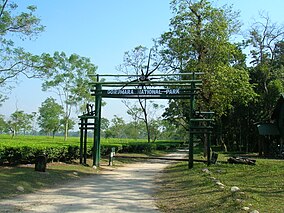
#2 of 5 Reserves and Natinal Parks in West Bengal
Location: Situated in the Jalpaiguri district of North Bengal, Gorumara National Park is known for its diverse flora and fauna amidst lush forests and grasslands.
Flora: The park hosts a variety of trees including sal (Shorea robusta), teak, and simul (Bombax ceiba), along with numerous orchid species.
Fauna: Gorumara is home to the Indian rhinoceros, elephants, gaur (Indian bison), sloth bears, leopards, deer species like sambar and barking deer, and a rich avian population with hornbills, owls, and peafowl.
Safari Experience: Jeep safaris are popular in Gorumara, offering visitors the chance to explore the park’s diverse habitats and increase their chances of encountering elephants and rhinos.
Conservation Efforts: The park faces challenges such as habitat fragmentation and poaching. Conservation initiatives focus on habitat connectivity, anti-poaching measures, and promoting eco-tourism to benefit local communities.
3. Buxa Tiger Reserve
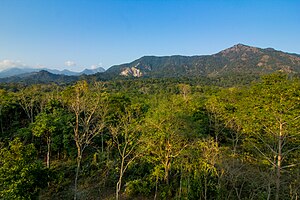
#3 of 5 Reserves and Natinal Parks in West Bengal
Location: Located in the Alipurduar district near the Bhutan border, Buxa Tiger Reserve is known for its rugged terrain and diverse ecosystems.
Flora: The reserve is characterized by moist deciduous forests, mixed with semi-evergreen and evergreen forests at higher elevations. It supports a variety of flora including bamboo species, orchids, and ferns.
Fauna: Apart from tigers, Buxa is home to leopards, clouded leopards, elephants, wild boar, civets, and a rich avian diversity with over 284 species recorded.
Safari Experience: Buxa offers trekking trails through dense forests, providing opportunities to observe wildlife in its natural habitat. Jeep safaris are also available for exploring the core area of the reserve.
Conservation Efforts: The reserve faces threats like habitat loss and human-wildlife conflict. Conservation efforts focus on habitat restoration, community-based conservation initiatives, and promoting sustainable livelihoods for local communities.
4. Neora Valley National Park
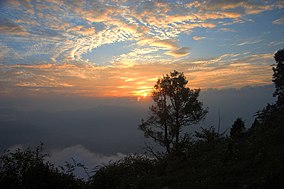
#4 of5 Reserves and Natinal Parks in West Bengal
Location: Situated in the Kalimpong district of West Bengal, Neora Valley National Park is nestled in the Eastern Himalayas.
Flora: Neora Valley is rich in biodiversity with dense temperate forests of oak, rhododendron, and bamboo. It is also known for its alpine meadows and colorful floral species.
Fauna: The park is home to rare and endangered species including red pandas, Himalayan black bears, clouded leopards, wild boars, and numerous bird species such as tragopans, monals, and sunbirds.
Safari Experience: Treks through Neora Valley take visitors through pristine forests, alpine meadows, and rhododendron groves, offering glimpses of rare and elusive wildlife amidst breathtaking Himalayan landscapes.
Conservation Efforts: Neora Valley faces challenges such as habitat fragmentation and illegal logging. Conservation initiatives include habitat restoration, research on rare species, and promoting sustainable tourism practices.
5. Jaldapara National Park
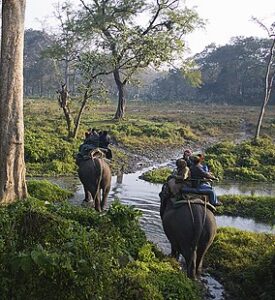
# 5 of 5 Reserves and Natinal Parks in West Bengal
Location: Located in the Alipurduar district, Jaldapara National Park is known for its population of Indian one-horned rhinoceroses.
Flora: The park is characterized by tall grasslands interspersed with riverine forests. Common tree species include sal, teak, and rain tree (Samanea saman).
Fauna: Apart from rhinos, Jaldapara is home to elephants, Bengal tigers, leopards, spotted deer, wild boar, and a variety of bird species including the Bengal florican and crested serpent eagle.
Safari Experience: Elephant safaris are a highlight of Jaldapara, allowing visitors to get up close to rhinos and other wildlife in the grasslands and riverine forests of the park.
Conservation Efforts: The park faces threats like habitat loss and poaching. Conservation efforts focus on habitat restoration, anti-poaching measures, and community-based conservation initiatives.
Conservation Initiatives and Challenges
West Bengal’s wildlife reserves and national parks play a crucial role in biodiversity conservation and ecosystem preservation. However, they face several challenges including habitat loss, human-wildlife conflict, poaching, and climate change. Conservation efforts are multifaceted, involving habitat restoration, anti-poaching measures, community engagement in conservation initiatives, and promoting sustainable tourism practices to mitigate these challenges.
Conclusion
West Bengal’s wildlife reserves and national parks offer a diverse tapestry of ecosystems and species, from the mangrove forests of Sundarbans to the alpine meadows of Neora Valley. Each sanctuary and park provides unique opportunities for wildlife enthusiasts, researchers, and tourists to explore and appreciate India’s natural heritage. By addressing conservation challenges and promoting sustainable practices, West Bengal continues to uphold its commitment to preserving these invaluable ecosystems for future generations to cherish and protect.

No Responses